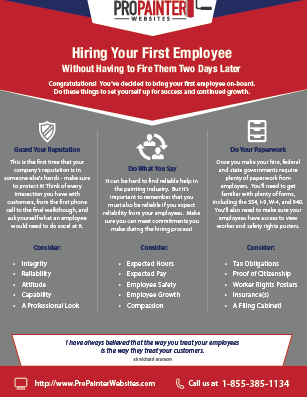Explore The Influence Of Seasonal Components On The Efficiency Of Industrial Exterior Painting And Identify The Ideal Times To Achieve Enduring Results For Your Task
Explore The Influence Of Seasonal Components On The Efficiency Of Industrial Exterior Painting And Identify The Ideal Times To Achieve Enduring Results For Your Task
Blog Article
Write-Up Created By-Aguilar Skafte
When you're preparing a commercial external painting project, seasonal variables can make or damage your results. You'll want to take into consideration exactly how temperature level and humidity impact paint application and drying out times. Picking the appropriate period can ensure your paint adheres appropriately and lasts longer. However which paint material cost per square foot are truly the most effective for this kind of job? Let's discover the crucial elements that can influence your task's success.
The Impact of Temperature on Paint Application
When you're intending a commercial exterior paint task, the temperature level can dramatically affect just how well the paint sticks and dries.
Preferably, you want to repaint when temperature levels vary between 50 ° F and 85 ° F. If it's too cool, the paint may not heal appropriately, bring about problems like peeling off or splitting.
On the other hand, if it's as well hot, the paint can dry out also swiftly, protecting against correct bond and resulting in an unequal coating.
You should additionally think about the moment of day; early morning or late afternoon offers cooler temperature levels, which can be a lot more positive.
Constantly examine the manufacturer's suggestions for the certain paint you're making use of, as they usually give support on the excellent temperature variety for ideal results.
Moisture and Its Result on Drying Times
Temperature isn't the only ecological factor that influences your business external paint job; moisture plays a substantial duty too. High moisture levels can decrease drying times significantly, impacting the total high quality of your paint job.
When the air is filled with moisture, the paint takes longer to heal, which can bring about issues like poor adhesion and a higher risk of mold development. If you're painting on a particularly damp day, be planned for prolonged delay times in between coats.
It's important to keep track of regional weather and strategy accordingly. Preferably, go for humidity degrees in between 40% and 70% for optimal drying.
Keeping these factors in mind ensures your job stays on track and supplies a long-term coating.
Best Seasons for Commercial Outside Paint Projects
What's the very best time of year for your commercial external painting jobs?
Springtime and very early autumn are typically your best options. During these seasons, temperature levels are mild, and moisture degrees are frequently reduced, creating optimal problems for paint application and drying.
Stay clear of summertime's intense heat, which can create paint to dry too swiftly, bring about bad adhesion and coating. In a similar way, winter season's chilly temperatures can hinder proper drying out and curing, risking the longevity of your paint work.
Go for days with temperatures between 50 ° F and 85 ° F for optimum results. Suggested Web site in mind to check the regional weather report for rain, as wet conditions can wreck your job.
Planning around these variables ensures your painting task runs efficiently and lasts longer.
Verdict
In conclusion, planning your commercial outside paint tasks around seasonal considerations can make a substantial distinction in the end result. By organizing work during the perfect temperature levels and humidity levels, you'll make sure better adhesion and drying out times. Remember to keep an eye on regional weather prediction and select the correct time of year-- springtime and very early fall are your best bets. Taking these actions will help you attain a sturdy and specialist finish that lasts.
